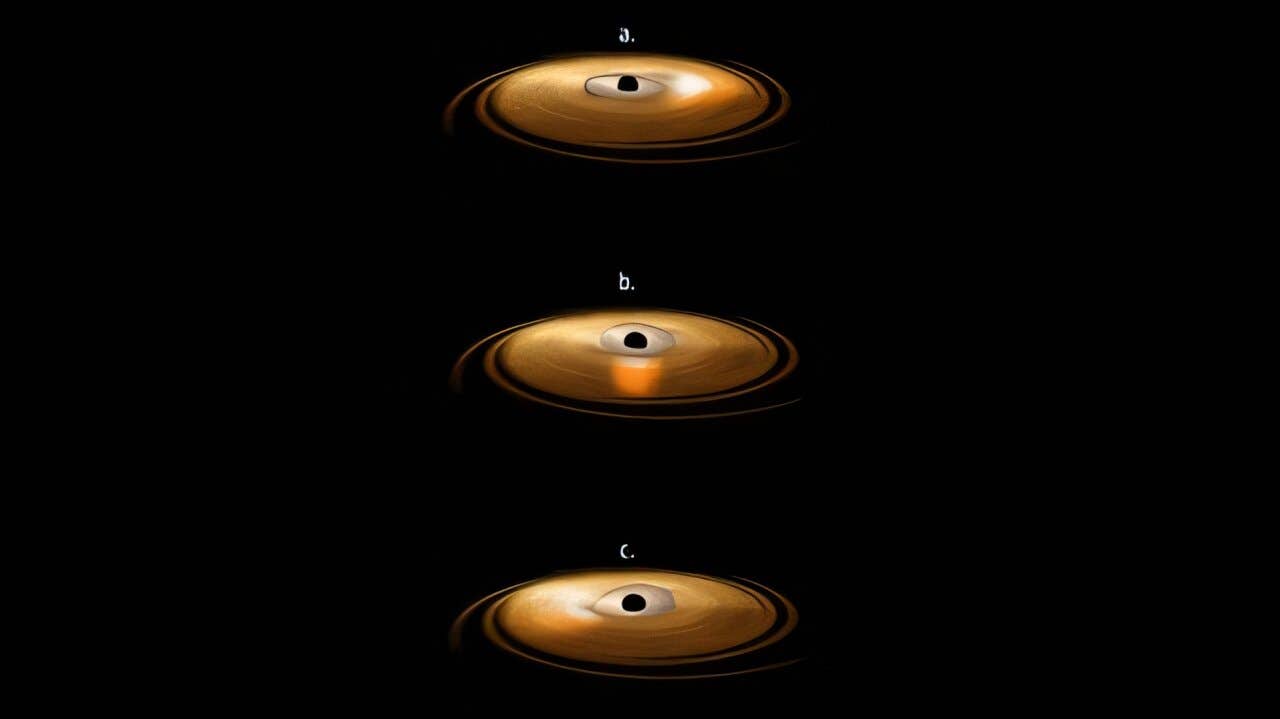Revolutionary camera snaps pictures of invisible objects at 1 trillion frames per second
A revolutionary new camera captures up to 1 trillion frames per second, visualizing phenomena once thought impossible to see.

A Caltech researcher has developed a groundbreaking camera capable of capturing up to 1 trillion frames per second—fast enough to reveal the inner workings of transparent objects once thought impossible to image. (CREDIT: Redpixel.pl/Shutterstock.com)
Over a year ago, a new camera stunned the world with its ability to snap 10 trillion frames per second. That speed made it possible to watch light move in slow motion. But for all its speed, the camera had a limit—if it couldn’t see an object, it couldn’t record it.
That challenge sparked a fresh innovation. Lihong Wang, a leading engineer from Caltech, built a new camera that shifts the focus from sheer speed to transparency. This latest model, detailed in Science Advances, captures up to 1 trillion images per second. More importantly, it can photograph what was once nearly impossible to see—clear materials like glass and water.
The invention, called phase-sensitive compressed ultrafast photography (pCUP), captures ultrafast activity in see-through substances. That includes shockwaves, and possibly even fast-moving signals in the brain. It blends cutting-edge speed with a classic technique first developed a hundred years ago.
That old method is known as phase-contrast microscopy. Created by Dutch physicist Frits Zernike, it relies on the way light changes speed. When light passes through something like glass, it slows down, then speeds back up once it exits. This shift in timing subtly alters the light wave.
Normally, those shifts are invisible. But with precise optical tweaks, scientists can make those changes stand out. The result is a sharp image of something our eyes would otherwise miss.
Wang and his team brought this concept into the ultrafast era. “What we’ve done is to adapt standard phase-contrast microscopy so that it provides very fast imaging, allowing us to image ultrafast phenomena in transparent materials,” he said.
At the heart of this system lies a technology called lossless encoding compressed ultrafast photography (LLE-CUP). It takes a different route than most ultrafast video tools, which require repeated imaging of the same event.
Instead, LLE-CUP captures everything in a single shot. No need to repeat the action. That’s what makes it ideal for filming events too quick to stage again—like a shockwave moving through glass or a burst of energy inside a neuron.
Related Stories
This single-shot method is crucial because it can capture incredibly rapid motions, such as light pulses, which would be missed by conventional cameras due to their slower imaging speed.
In their research, Wang and his team demonstrated the power of pCUP by capturing the spread of a shockwave in water and the journey of a laser pulse through a crystalline material. These examples underscore the potential of pCUP to visualize processes that are otherwise invisible.
Though still in its early stages, pCUP holds promise across various scientific fields, including physics, biology, and chemistry. Wang envisions its application in neuroscience, particularly in observing the slight expansion of nerve fibers as signals pass through them.
“If we have a network of neurons, maybe we can see their communication in real time,” Wang says. The technology could also visualize how a flame front spreads in a combustion chamber, given that phase contrast changes with temperature.
Other applications for pCUP
Phase-sensitive compressed ultrafast photography (pCUP) has numerous real-world applications across various scientific and industrial fields:
Biomedical Imaging:
- Cellular and Molecular Dynamics: pCUP can capture rapid processes in living cells, such as protein folding, molecular interactions, and intracellular signaling, providing insights into fundamental biological mechanisms.
- Neuroimaging: It can be used to study fast neuronal activities and signal transmission in the brain, aiding in the understanding of neurological diseases and the development of new treatments.
Chemical Reactions:
- Reaction Kinetics: pCUP enables the observation of ultrafast chemical reactions and intermediate states, crucial for developing new catalysts and understanding reaction mechanisms.
- Photochemical Processes: It can capture the dynamics of light-induced chemical reactions, aiding in the design of more efficient solar energy conversion systems and photodynamic therapies.
Materials Science:
- Phase Transitions: pCUP can observe rapid phase transitions in materials, providing insights into the development of advanced materials with tailored properties for electronics, photonics, and energy storage.
- Strain and Stress Analysis: It can be used to study the behavior of materials under high strain rates, informing the design of materials for aerospace, automotive, and civil engineering applications.
Optics and Photonics:
- Laser Dynamics: pCUP can capture the dynamics of laser pulses and interactions with matter, useful for optimizing laser systems in communications, manufacturing, and medical applications.
- Nonlinear Optical Phenomena: It enables the study of ultrafast nonlinear optical processes, which are critical for developing advanced optical devices and communication technologies.
Fluid Dynamics:
- Turbulence and Shock Waves: pCUP can visualize fast fluid dynamics phenomena, such as turbulence and shock waves, improving the understanding of aerodynamic and hydrodynamic systems.
- Cavitation: It can capture the formation and collapse of cavitation bubbles, relevant for improving industrial processes and understanding the mechanisms of cavitation-induced damage.
Plasma Physics:
- Plasma Dynamics: pCUP can observe the behavior of plasmas in fusion experiments, astrophysical phenomena, and industrial applications, contributing to the development of controlled nuclear fusion and advanced plasma technologies.
Security and Defense:
- Explosive Dynamics: It can capture the rapid events involved in explosions, aiding in the development of better protective measures and forensic analysis of explosive events.
- Projectile Motion: pCUP can track the high-speed motion of projectiles, informing the design of more effective defense systems and improving ballistics research.
The groundbreaking paper titled “Picosecond-resolution phase-sensitive imaging of transparent objects in a single shot” lists co-authors Taewoo Kim, a postdoctoral scholar in medical engineering, and former Caltech researchers Jinyang Liang and Liren Zhu. This research was supported by the National Institutes of Health.
Wang's affiliation with the Tianqiao and Chrissy Chen Institute for Neuroscience at Caltech underscores his commitment to advancing our understanding of the brain.
As the development of pCUP continues, its ability to reveal the unseen could usher in new scientific discoveries and applications, making the invisible, visible.
Note: Materials provided above by The Brighter Side of News. Content may be edited for style and length.
Like these kind of feel good stories? Get The Brighter Side of News' newsletter.



